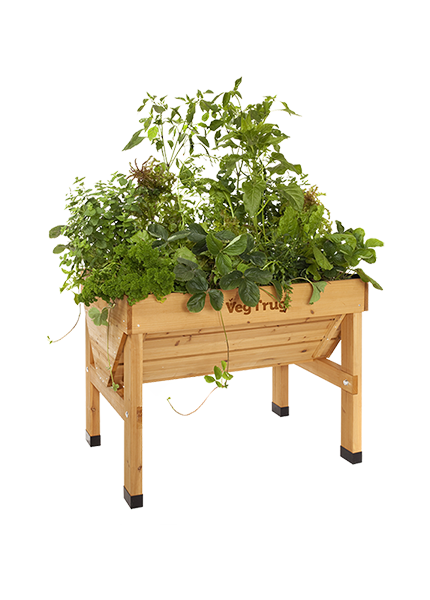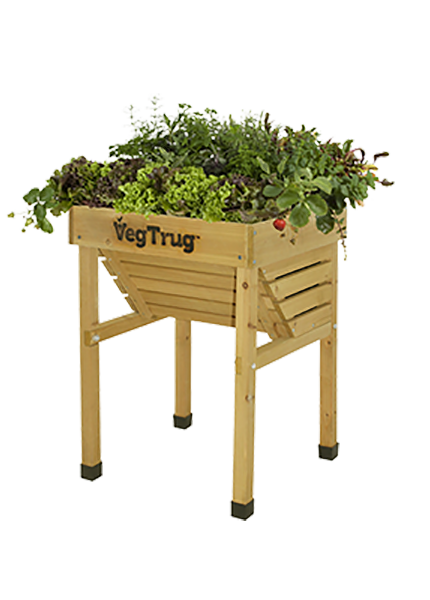A favourite in French cuisine, the subtle liquorice taste of tarragon gets added to fish, scrambled eggs and is one of the four main ingredients in the famous French herb blend ‘fines herbes’.
There are a few tarragon varieties, but with its stronger flavour, French tarragon is considered the tastiest.
Read more about this versatile herb in our ‘how to grow tarragon’ guide.
Tarragon doesn’t seed well, so the best way of approaching how to grow tarragon is from small plants or by taking straight from a root ball or making cuttings from existing plants. Tarragon does well in containers too, so is perfect for your VegTrug. Start your planting in the middle of spring and position in a sunny but sheltered place. Make sure the soil is well drained too. You can plant tarragon right through to the end of summer.
Tarragon will last two to three years, dying back to the ground in winters (you may need to cover the plants with a fleece in colder or more exposed areas). After this divide the roots to create
Keep it well watered in the warmer months and remove any flowers, doing both encourages leafy growth. Don’t allow the plants to become waterlogged, however, as this may damage the roots. As long as you remove flowers as they appear you’ll get a constant supply of fresh leaves to use in dishes throughout the growing season - usually into the early autumn.
Tarragon can suffer powdery mildew, but the risks can be reduced by the proper spacing out of your plants - aim for between 45 and 60 inches between them. Powdery mildew is a mist-like coating on the leaves and any with signs should be removed immediately. Watering from above can also help, as powdery mildew doesn’t like contact with water.
Tarragon can also suffer from orangey or black blisters, known as rust. Remove any plants immediately but don’t put them in the compost as the fungal spores can infect the compost and spread to any areas where you use the compost.
Once you know how to grow tarragon, you’ll get steady supply of aniseedy-tasting leaves for those favourite chicken and fish dishes. Like most herbs, tarragon is best served fresh, but can also be dried and stored in air-tight containers.
Cut the shoots and remove the leaves, then add them to whatever you’re cooking.
How to grow tarragon is part of the VegTrug Grower’s Guide.

